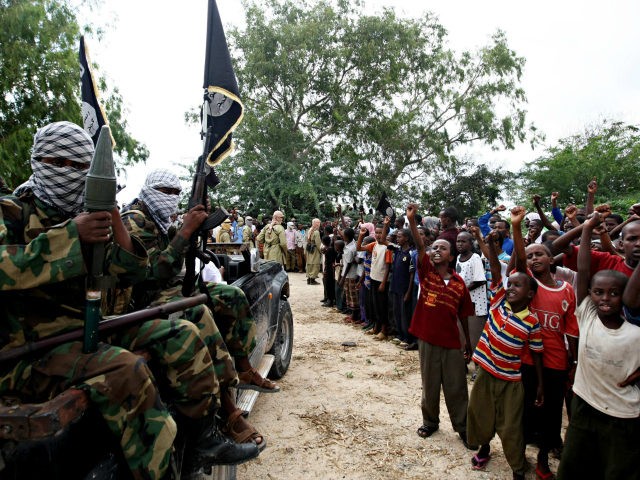Several African countries proved immune to last year’s decrease in terrorism-linked deaths across most of the world, an assessment by the Institute for Economics and Peace (IEP) released on Wednesday shows.
While most of the world experienced a decrease of “27 percent to 18,814” in the number of deaths from terrorist groups last year when compared to 2016, five African countries experienced some of the “largest increases in deaths from terrorism” during the same period, IEP’s Global Terrorism Index (GTI) 2018 reveals.
“Half of the [top ten] countries with the largest increases in terrorism are located in Africa, with rises also occurring in the Central African Republic, Mali, and Kenya,” the report states.
The index identifies the ten countries that experienced the largest increases in terror-linked deaths from 2016 to 2017 as Somalia, Egypt, Central African Republic, Myanmar, Mali, Kenya, Afghanistan, the Philippines, India, and the United Kingdom, respectively.
Islamic State (ISIS/ISIL) jihadis, identified as the most lethal terrorists in the world, maintain a presence in Africa, particularly in Somalia and Egypt.
ISIS also operates in Afghanistan, the Philippines, and India. The GTI report covers all forms of terrorism, not just attacks that Islamic extremists carry out. GTI notes:
The country with the largest total increase in terrorism compared to the prior year was Somalia where the number of deaths rose by 708, a 93 percent increase. The terrorist group Al-Shabaab was responsible for the single largest terrorist attack in the world in 2017, which killed 588 people and accounted for most of the increase in Somalia.
There was also a worrying increase in the number of deaths from terrorism in Egypt, where deaths rose by 123 percent. The majority of these deaths were caused by the Sinai Province of the Islamic State, reflecting the shift in IS activity away from Iraq and Syria.
Despite ISIS’s presence in Somalia, the al-Qaeda al-Shabaab wing reigns supreme over all terrorist groups there, the United Nations reports, acknowledging that both groups are expanding in the country.
The index treats al-Qaeda and ISIS affiliates, like al-Shabaab and Boko Haram, respectively, as groups separate from their parent organization.
According to GTI, Africa is home to three of the world’s deadliest terrorist groups: ISIS, al-Shabaab, and Boko Haram. The index notes:
The four terrorist groups responsible for the most deaths in 2017 were the Islamic State of Iraq and the Levant (ISIL), the Taliban, Al-Shabaab, and Boko Haram. These four groups were responsible for 10,632 deaths from terrorism, representing 56.5 percent of total deaths in 2017. … In 2017, Al-Shabaab overtook Boko Haram as the deadliest terror group in sub-Saharan Africa for the first time since 2010. … On 14 October 2017, Al-Shabaab committed the deadliest terror attack of the year through a suicide and truck-bombing targeting a hotel and highway intersection in Mogadishu, killing 588 and injuring 316 individuals.
The Middle East and North Africa (MENA), as well as sub-Saharan Africa, were among the top three deadliest regions in the world for terror last year, with 33,126 and 9,342 fatalities, respectively.
GTI reports:
Between 2002 and 2017, the largest number of deaths from terrorism was recorded in the MENA region at 91,311 deaths. South Asia recorded just under sixty thousand deaths over the same period, with a further forty thousand occurring in sub-Saharan Africa. Between them, these three regions accounted for 93 percent of all deaths from terrorism since 2002.
ISIS is shifting its resources away from its fallen territorial caliphate in Iraq and Syria and into its other branches in “North Africa, sub-Saharan Africa, and Southeast Asia,” the index acknowledges.
“Every region in the world recorded a higher average impact of terrorism in 2017 than in 2002. The increase in the impact of terrorism was greatest in the Middle East and North Africa, followed by sub- Saharan Africa,” it adds.
The U.S. military once considered Libya to host the largest ISIS stronghold outside Iraq and Syria.
The GTI report points out that the North African branch of al-Qaeda, considered the wealthiest wing, is making a comeback.
“In the Maghreb and Sahel regions of Northern Africa, there has been a resurgence of terrorist activity in the past two years, most notably of Al-Qa’ida,” the index observes. “As of March 2018, there were more than 9,000 members of terrorist groups active in the region, mostly concentrated in Libya and Algeria.”
This year, the United States military has dropped a record 36 airstrikes on al-Shabaab in Somalia, already more than any other single year.
Nevertheless, the Pentagon said the United States is expected to pull out more than 700 American troops from Africa as part of the Trump administration’s decision to pivot away from the war on terror to focus on deterring strategic competitors like China and Russia.
Citing the fall of ISIS’s territorial caliphate in Iraq and Syria, GTI did note that for the third consecutive year, the number of terrorist attacks has decreased.
“Deaths from terrorism fell for the third consecutive year, after peaking in 2014. The total number of deaths fell by 27 percent between 2016 and 2017, with the largest falls occurring in Iraq and Syria,” the report reveals, adding, “Iraq recorded over 5,000 fewer deaths from terrorism in 2017, while Syria recorded over 1,000 fewer deaths.”
The index estimates the global economic impact of terrorism to be $52 billion in 2017, marking a 42 percent decrease from 2016.

COMMENTS
Please let us know if you're having issues with commenting.